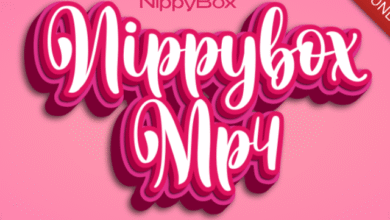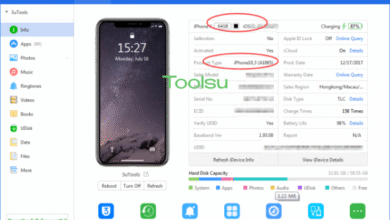Aula Software: Transforming Digital Learning in Higher Ed

As educational institutions seek to develop effective models of student engagement and streamline academic processes, Aula Software seeks to fill this gap. While modern conversation-driven learning platforms like Aula Software focus on collaborative and connected learning, a conversation with a professor or student enhances the learning interaction.
As a faculty or student affairs professional, you will gain value from this guide as it deep dives into Aula Software telling you its features and benefits, use cases, and pointers for action-focused implementation.
We aim to understand the transformation of digital learning by Aula, alongside the potential it has to address the needs of educational institutions.
Table of contents
What Is Aula Software?
For educational institutions keen on transforming from mere course content delivery to nurturing learning communities, Aula Software has crafted a Learning Experience Platform (LXP). Unlike Moodle or Blackboard, traditional Learning Management Systems (LMS), Aula focuses on:
- Student engagement as a primary focus.
- Focus on real time conversations.
- User friendliness for teachers and students.
Aula Software, founded in 2016, has already shown positive impacts on student engagement and satisfaction for its users like Ravensbourne and Coventry University.
Primary Characteristics of Aula Software
1. Collaborative Interface
- Live chat and discussion threads
- Announcements
- Familiar social media style notifications
2. Integrated Learning Tools
- Turnitin, Panopto and Zoom integration
- On-the-go learning for mobile devices
- Resources such as PDF, videos, and Google Docs
3. Ease of Use for Educators
- Content creation through drag-and-drop
- User-friendly course layout designer
- Ready-made templates for instant use
4. Analytics & Feedback
- Student participation insights
- Faculty metrics for real-time adaptation
- Dynamic feedback mechanisms
Aula vs Traditional LMS: A Comparative Overview
| Feature | Aula Software | Traditional LMS (e.g., Moodle) |
| Interface | Social & intuitive | Formal & menu-driven |
| Collaboration | Real-time messaging | Forum-based, static |
| Mobile Responsiveness | Optimized for mobile | Often clunky or limited |
| Third-party Integration | Seamless | Can be complex |
| Engagement | High | Varies widely |
Advantages of Using Aula Software
For Educators:
- Increased teaching and decreased admin tasks.
- Encourages real-time feedback.
- Actionable analytics to monitor student progress.
For Students:
- Streamlined interface increases accessibility and reduces learning curve.
- Keeps students engaged through real-time updates.
- Active participation leads to improved learning outcomes.
For Institutions:
- Stronger differentiation amid competition within the education market.
- Cross-department scalable implementation.
- Increased student satisfaction and retention.
How to Use Aula Software In Your Institution
Step 1: Strategic Planning
- Determine issues with your existing learning management system (LMS).
- Set goals for improving learner participation and innovation in teaching.
Step 2: Stakeholder Alignment
- Include faculty, IT, and student representatives in the planning stage.
- Define collaboration, prerequisites, and monitoring and maintenance needs.
Step 3: Training and Onboarding
- Institution-wide faculty workshops.
- Promote and incentivize early adopters to champion sharable and scalable practices.
- Use mock or pilot courses to perfect the process prior to institution-wide implementation.
Step 4: Continuous Evaluation
- Assess achievement of set objectives with Aula analytics.
- Conduct feedback surveys every semester.
- Adapt the instructional design based on the results.
Real-World Use Case: Coventry University
Coventry University implemented Aula Software across their campuses and achieved the following outcomes:
- 96% student participation rate in online discussions.
- 60% reduction in missed deadlines because of real-time notifications.
- Improved feedback and responsiveness from faculty.
This case study illustrates the transformational impact of Aula on institutional and academic development.
Tips for Getting the Most Out of Aula
- Use polls, quizzes, and initiate discussions to create engagement triggers.
- Align students with activities through weekly recap posts.
- Build community through peer feedback.
- Check in using the mobile app during commutes or between classes.
How to Keep an Eye on Limitations and How to Solve Them
| Challenge | Solution |
| Resistance to change | Conduct faculty workshops and pilot tests |
| Feature overload | Provide curated onboarding documentation |
| Integration issues | Collaborate with Aula’s support team |
Conflicts in LSI and Related Keywords
In order to optimize search engine results and enhance content substance, further terms and LSI keywords are listed as follows:
- learning management system
- course-driven interactions
- software for engaging students
- learning management system for collaboration
- educational technologies
- tools for communication in online courses
Conclusion
Aula Software always stands out because it changes the game in education technology. With its conversation-driven and intuitive methods to teaching, it shifts learners and educators from passive to active participants and, thus, transforms the classroom into a more collaborative environment. Addressing the fundamental problems that modern academic institutions face, Aula Software provides active engagement, effortless communication, and smooth integration with other academic software.
Aula Software’s innovation lies in its ability to ‘humanize’ the online learning ecosystem. Most platforms are overly rigid, and tend to separate instruction from participation, sparking little to no interaction. In contrast, with Aula, dialogue flows easily, feedback can be given and received in real time, and everyone learns together. Whether a facilitator is overseeing several classes or walking learners through complex topics, Aula’s intuitive interface and powerful workflow tools guarantee effortless control, consolidating quality instruction.
Aside from these advantages, Aula Software’s adoption has led to greatly enhanced participation, assignment completion, and overall user satisfaction. Investment into digital innovation repositioned these universities to be at the forefront of academic advancements, all while enhancing the educational journey.
Education is changing, and advanced tech like Aula Software is ready to equip learners to deal with the future. This software enables learners and teachers to thrive in a world that is hyper-competitive and tech-focused with features like enhanced accessibility and tailored learning journeys.
FAQS
1. How does Aula Software differ from traditional LMS platforms like Moodle or Blackboard?
Aula Software diverges from traditional LMS platforms by emphasizing real-time, conversation-driven learning rather than static content delivery. Unlike Moodle or Blackboard, which often rely on formal interfaces and forum-based communication, Aula offers a mobile-optimized, intuitive environment that fosters collaboration through live chat, social-style notifications, and embedded multimedia tools—all designed to elevate student engagement and streamline educator workflows.
2. What are the key benefits of implementing Aula Software in higher education institutions?
Implementing Aula Software brings numerous benefits, including increased student participation, reduced administrative burden for faculty, and enhanced communication. It integrates seamlessly with tools like Turnitin and Zoom, offers real-time analytics, and promotes active learning communities. Institutions adopting Aula Software often report higher retention rates, better feedback mechanisms, and improved academic outcomes across departments.
3. How can universities successfully implement Aula Software for digital learning transformation?
To effectively implement Aula Software, universities should begin with strategic planning that identifies limitations in current LMS solutions. Stakeholder involvement—faculty, IT teams, and student reps—is critical for alignment. Success hinges on structured onboarding, pilot testing, and continuous evaluation using Aula’s built-in analytics. Encouraging peer-driven practices and providing support resources can also ease the transition and maximize institutional benefits.





